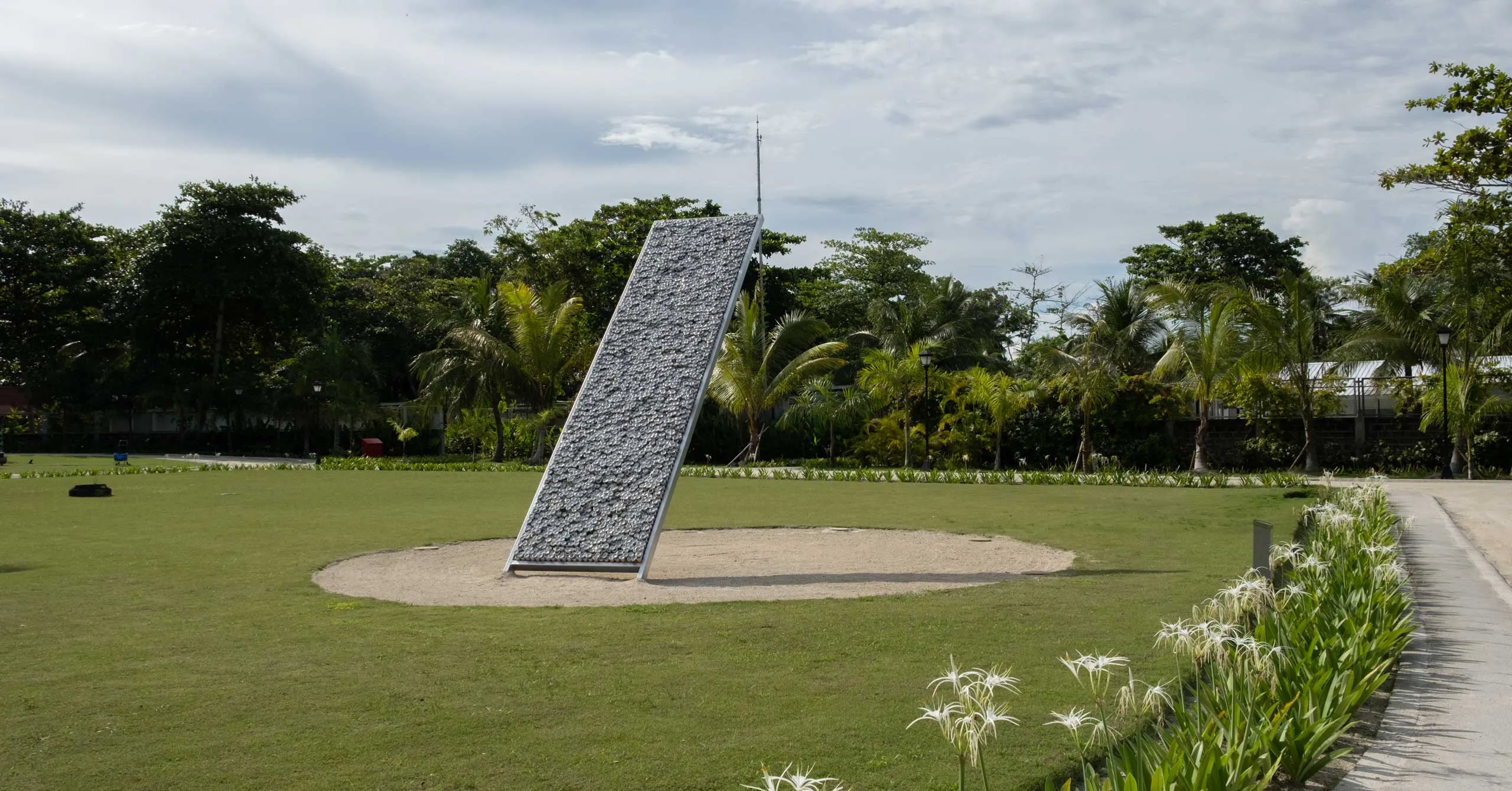Structure for Light Reading by Gary Ross Pastrana. Courtesy of Dusit Thani Lubi Plantation and Silverlens Gallery
Courtesy of Dusit Thani Lubi Plantation and Silverlens Gallery
At the Dusit Thani Lubi Plantation Island Resort, nine contemporary art pieces by various artists are interwoven with nature.
“We used to come here when there was nothing,” remembers Rachel Rillo, co-director of Silverlens Gallery. She and her partner, Isa Lorenzo, the gallery’s founder, would take a speedboat from Davao City to Kopiat Island, on the Davao Gulf, and sleep under mosquito nets in the single wooden bungalow that stood there. When the Lorenzo family announced plans to develop the island into a resort, their initial reaction wasn’t excitement. “We thought we’d lost our hideaway.” Instead, they helped redefine it.
This June, Silverlens Gallery launched the Lubi Art Project, nine contemporary art pieces scattered throughout the Dusit Thani Lubi Plantation Island Resort. Eight years in the making, the project transforms this private island in Davao de Oro into a cultural habitat, where art coexists with luxury villas, rich marine life, and the local community that lives and works on the island. For the launch weekend, participating artists were present, gathered not only to unveil their works but to celebrate the island’s evolution into a new kind of sanctuary, one that folds contemporary art into its vision of mindful living and ecological renewal.
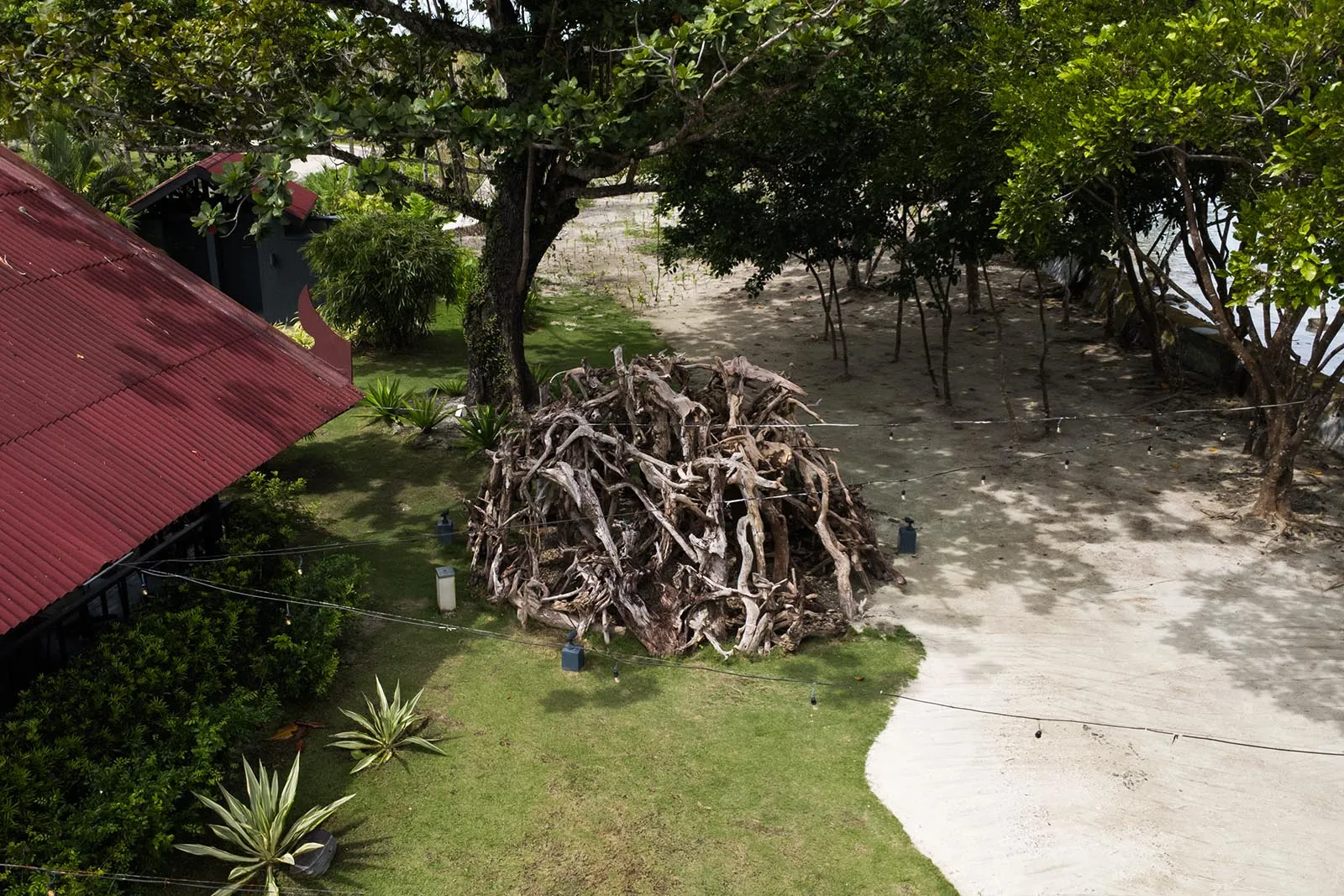
The idea of art on Lubi Island did not fit in with the original brief. “I’d always wanted to have art on the island,” Lorenzo shared. “But well, we couldn’t really afford it.” Still, in 2017, she and Rillo decided to try. They invited artist Bernardo Pacquing to spend time there. Pacquing was drawn to its natural debris: driftwood scattered all over. What emerged was Earth Mound, a meditative dome of found materials, the first piece ever installed on Lubi. For years, it has stood there, quietly enduring the elements.
The project remained dormant, a bit of an impossible dream, until a few years later. Tomas Lorenzo, president of the island’s real estate development company Torre Lorenzo Development Corporation and Isa’s brother, was jogging through a vineyard in South Africa. Along his route, he noticed contemporary art seamlessly embedded in the landscape. Suddenly, the vision clicked. “This is what Isa wants to do at Lubi,” he realized. When he returned to Manila, he called Isa and asked : “How do we make this happen?”
That call marked the beginning of what would become the Lubi Art Project.
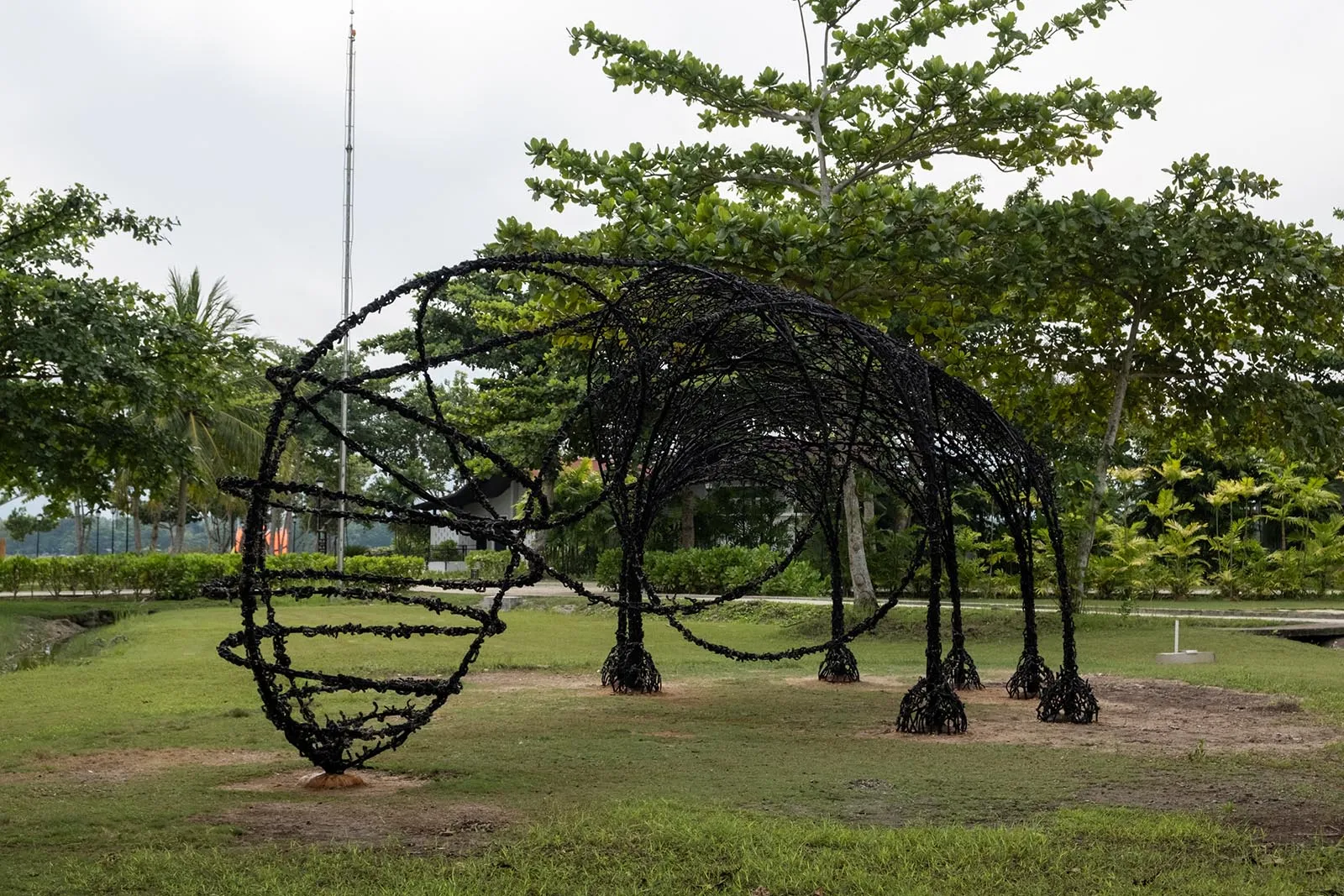
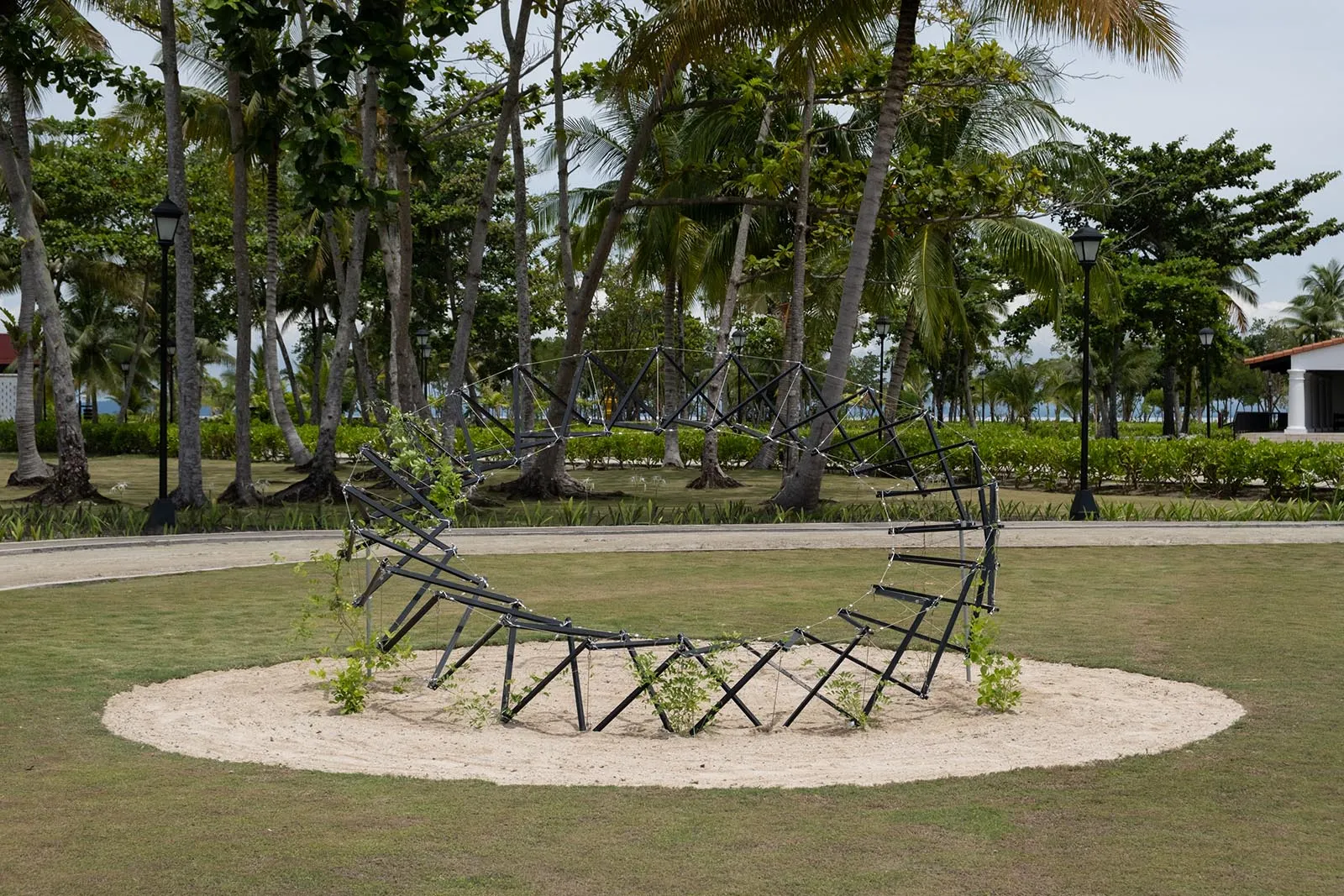
From the start, the brief to the artists was clear: work with what the island gives you. Materials had to be sourced on-site. The aim was to keep the project as close to carbon neutral as possible. In addition to environmental mindfulness, artists collaborated with the locals, gathering the community directly into the making of each piece. The result is not just a collection of artworks, but a collective expression, rooted in place and process.
“Everywhere There You Are,” a collaborative piece by Wawi Navarrozza and Christina Quisumbing Ramilo, debuted at the Malasimbo Music and Arts Festival a few years ago. Reinstalled by the water, the piece rises high near the resort’s pier, fabricated from fishing nets threaded with vivid strips of neon orange silk. As guests approach by catamaran, it becomes the island’s first visual greeting, a fluttering flare of welcome that sets the tone for the island.
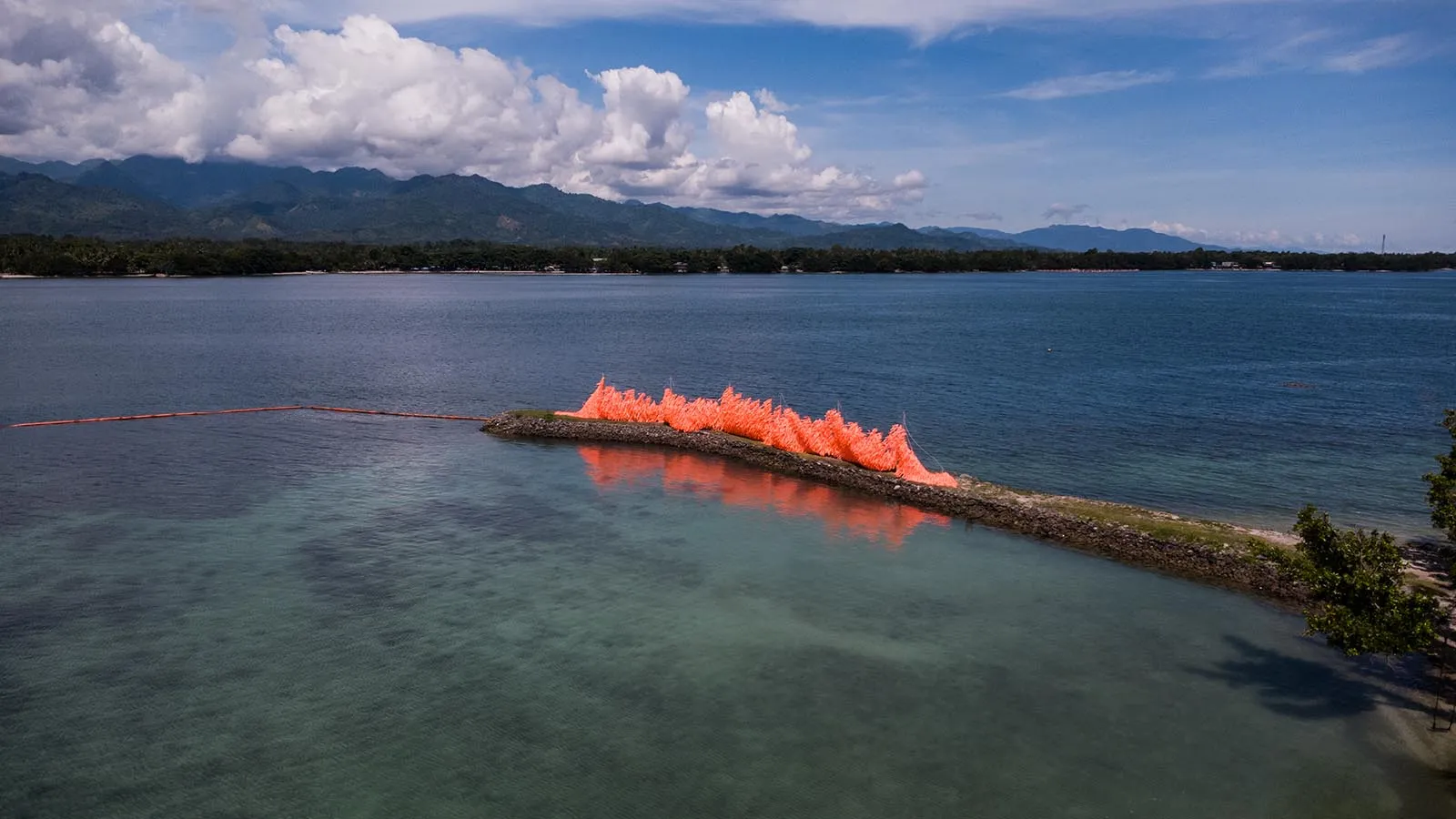
“We don’t expect the art to endure” states Lorenzo. “They are not permanent.” Guests who wander through the resort’s paths and green spaces simply stumble upon the pieces, guided by curiosity, seeking out what catches the eye.
One can tell time with Gary-Ross Pastrana’s “Structure for Light Reading,” a larger than life sundial fashioned from soft drink cans. When the wind flows just right, visitors will hear “417” hum. Corinne de San Jose’s interactive installation encourages visitors to follow the spiral path enclosed by bamboo and appreciate the sound from slits on the stalks coupled with the crunch of pebbles underneath their feet. Poklong Anading’s “recruit (no. 4)” and James Clar’s “Laser Speeds “will, over time, get overrun with foliage, quietly absorbed by the island. Anading’s freeform sculpture, echoes the movement of water and organic coral forms, shaped from over 300 feet of fishing nets recovered with the help of the Davao Gulf Divers from the reefs around the island. Up close the tangled nets resemble lace, with bits of coral still visible, as if crocheted on to the work. From a distance, Christina Quisumbing Ramilo’s “Builder “looks like a lacquered totem. Move nearer, and it becomes apparent that the rhythmic composition results from six cement mixers stacked atop each other, their curving shapes forming a sculptural column both raw and refined.
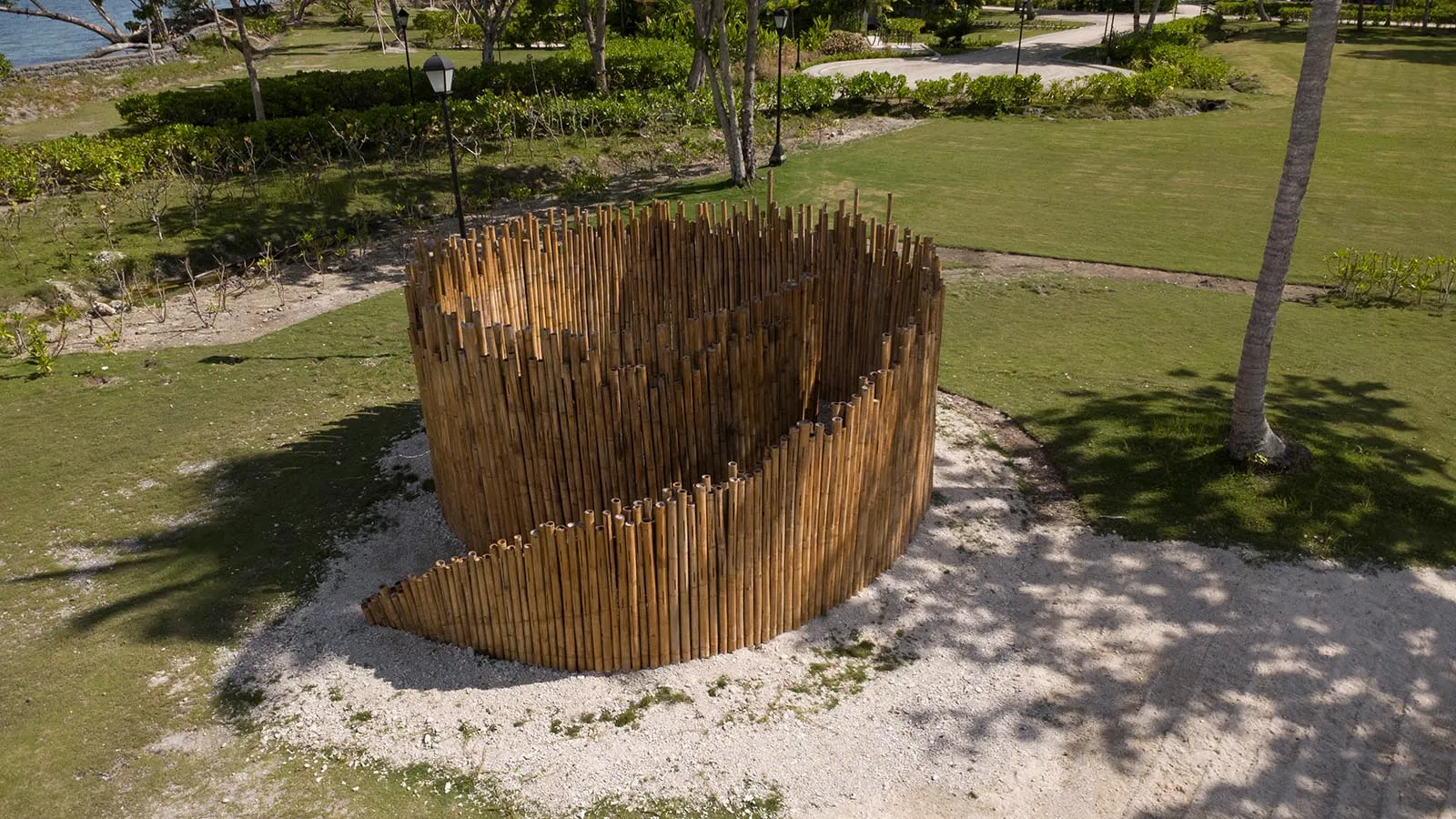
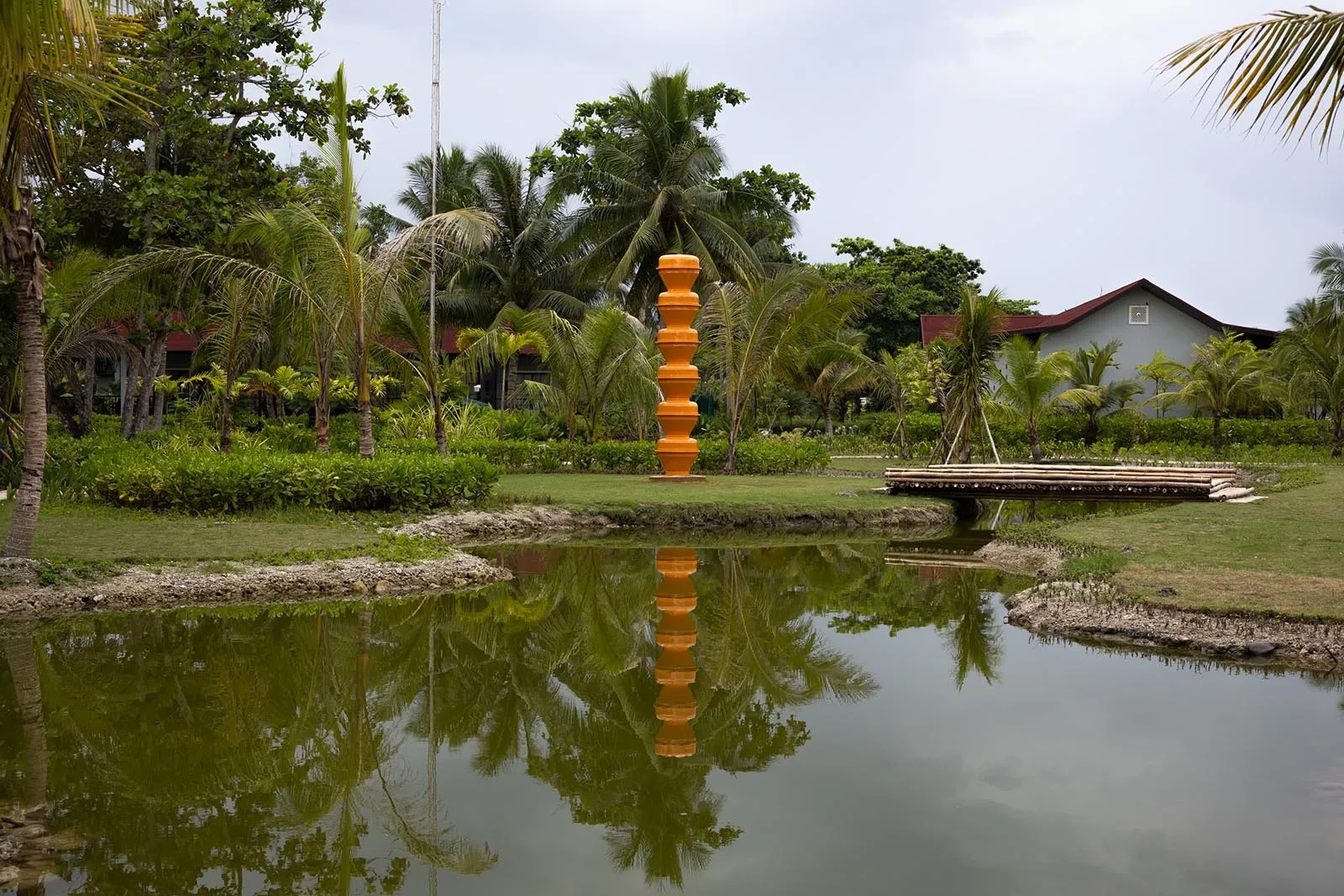
Gregory Hallili’s “Monument” is a memento mori from plastic detritus washed up on the beaches. He worked on the island in August last year, the height of the rainy season, recounting how dismayed he was at the trash brought in from the gulf. But working with two assistants, former fishermen now with the resort’s construction team, added a different dimension to his process. “I really valued the interaction with the locals. I got to know the team very well, and I appreciated the whole exchange of skills.”
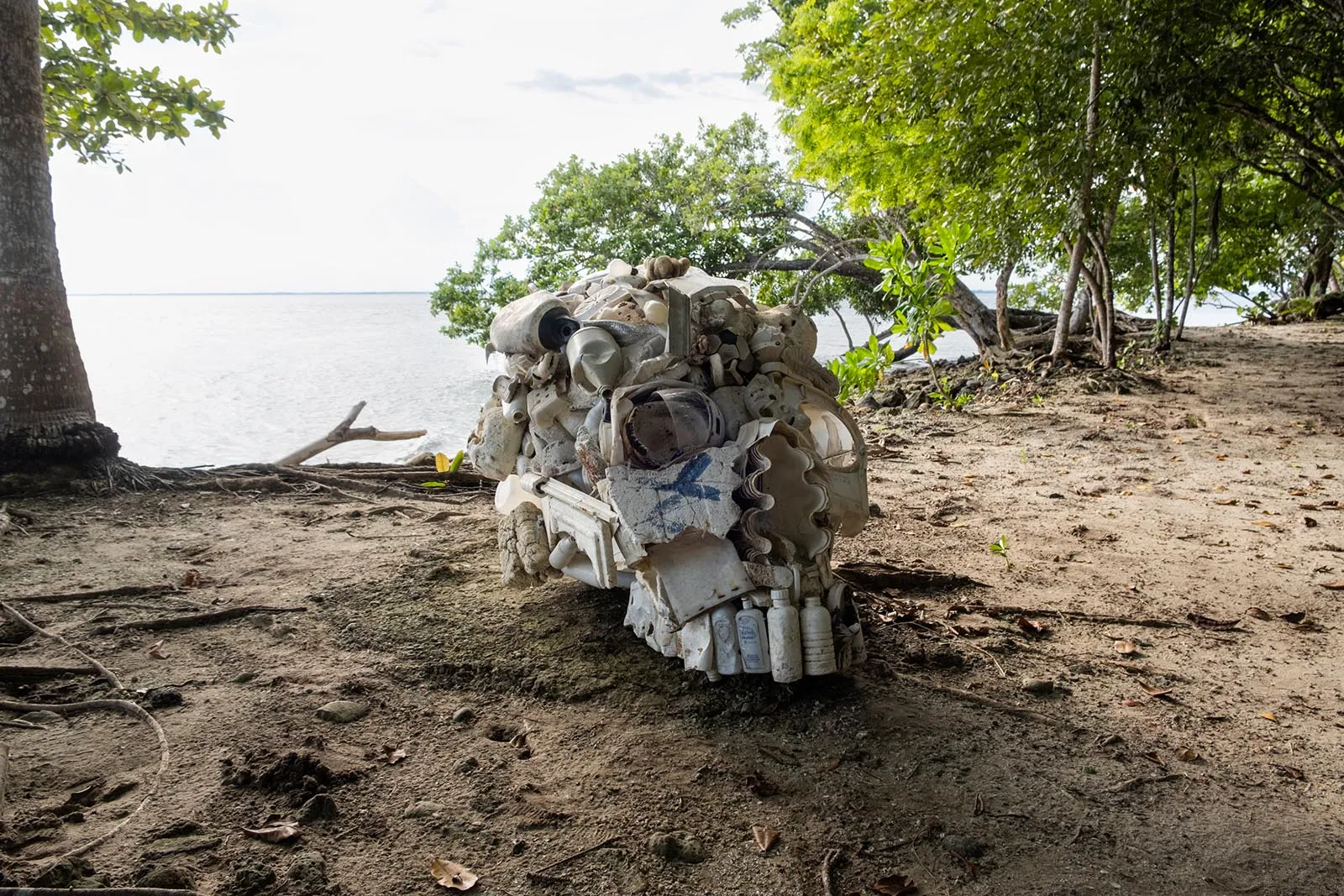
Alfredo and Isabel Aquilizan echo this sentiment. Like Halili, their work sits inside the mangrove forest, technically outside the boundaries of the resort. “How long after sunset until it gets dark?” to which they credit their Fruitjuice Factori Studio team as co-creators, carries echoes of the duo’s characteristic interrogation of memory and displacement, a life-sized version of their migrant boat in rusted steel. They chose its location for where the sun hits gently when it rises and sets, where the mangrove extends outward, offering the best spot to jump into the waters of the gulf.
If the art feels in sync with the landscape, it’s because the landscape was never just a backdrop. The hotel prides itself as a model of ecological luxury: powered by solar panels, sustained by rainwater harvesting, and home to a protected coral and turtle sanctuary. Even the resort’s hot water runs on recycled heat. It’s a place where they built nature into the design.
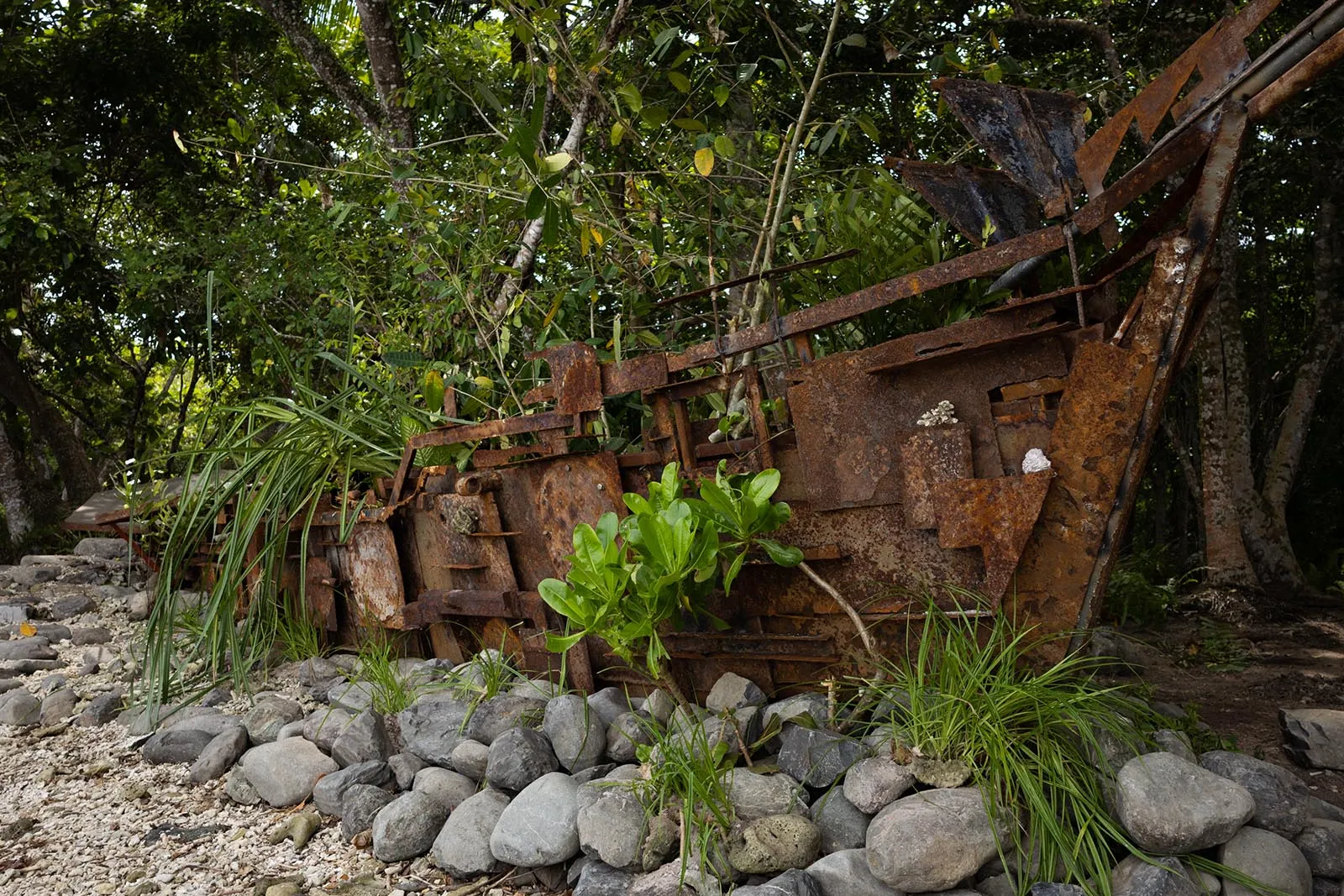
With the launch of the Lubi Art Project, that ethic now extends to art. The team did not simply install sculpture on the resort’s lawns and open spaces. They’ve developed an ongoing curatorial site, a residency venue for artists, and a story still unfolding, much like the eight years it took to bring it to life. Already, more art waits in the pipeline.
As guests strolled from installation to installation, relaxed on loungers that looked out into the water, or snorkeled above the revitalized coral beds, one felt the privilege of being let in on a secret. A revelation that had taken years to shape, molded by a genuine desire to include art that thoughtfully fits in. The art at Lubi becomes part of the island’s life, impermanent but alive and evolving.
- Postcards from Bangkok: A Vogue Editor Puts Together a City Guide for Your Next Visit
- Trickie Lopa’s Wardrobe Reflects the Creative World She Navigates
- What Participating Artists and Attendees Thought of Art Fair Philippines 2025
- The Filipino Artists Are Present: Roberto Feleo and Eisa Jocson Take Asia Now in Paris
